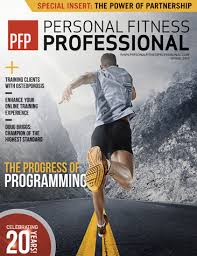If you’re here reading this article, we know you’re invested in continuing education and are ready to grow to the next level. Nice work, and your clients probably thank you for your diligence. However, even the most intelligent trainers make these five common mistakes when going from a sole business owner to developing a thriving business. When turning your job in fitness to a career, here’s a checklist for step-by-step guidance along the way.
- Make your strengths stronger
- Get a mentor
- Add value with every follow-up
- Survive the punches in round-one
- Stay humble
Make Your Strengths Stronger
There are some places you will never beat on certain things. You’re not going to beat any other facility by playing to their strengths, and that’s fine. Know what your target market needs and become the best at that.
For example, our goal at Results isn’t to tell people to jump as high as possible in minute one of session one. It’s not to train until you fall down. Those gyms around the corner said that, and that’s why they came to us. Our strength is our ability to change lives long-term.
Get excited about the fact that you’re different, and you have the ability to change a life. Don’t try to be like those guys.
Get a Mentor
No one gets to the top by being arrogant and going it alone. There are people in this industry who have done what you’re doing tenfold, and who are happy to share their advice and wisdom. Listen to them.
If having guidance didn’t help, why would the best athletes in the world need coaches? LeBron James clearly knows how to dribble and shoot a basketball. Yet having outside feedback helps us think objectively about our actions, goals, plans, and mistakes. An experienced mentor is an invaluable tool to any career fitness professional, as they’ve paved a path you can follow.
Add Value with Every Follow-up
Use the follow-up period to offer some value. Whether it’s a free book, consult, or assessment, just do something memorable. You’re opening up a window for years, even after they have tried other places. You might not notice it right away, but emails with a free dining out guide might turn in to a member down the road.
But please, please. Don’t just spam people. Every follow-up has to be different to add value. Space them out over time. Saying, “Hey do you want to meet with me?!” 80 times is only going to annoy them.
Each person will respond to a certain emotional trigger – fear of missing out, fear of loss, fear of pain. These usually trigger a reaction that, over time, turns into a profitable business.
Survive the Punches in Round One
It’s going to be hard at the beginning. Building a business isn’t easy. But if you’re in it for the long haul, you don’t necessarily have to win the first round. You just have to get to the second and third while learning from mistakes.
How many people lose 30 pounds in a month and actually keep it off? Not many. How many franchises are still around from the year 2000? Exactly.
This “I want it now” mindset is going to ruin your long-term business development. Stick around long enough and adjust your game so you get better every time. But just for fun, here are my quick tips to get you past the first round.
- Smile and have fun
- Learn to shake hands
- Laugh
- Read books for professional development
- Say your client’s name when they walk in
- Ask them questions and truly care about your members
- Have good posture
- Make eye contact
These seem simple, but you’d be surprised how far they can take you.
Stay Humble
Kendrick Lamar knew what he was talking about. There’s a reason that song was a hit.
Once you’ve seen some success, don’t stop working. When you think you’ve “made it” is when you’re most vulnerable. After putting in years of hard work, you shouldn’t be scraping to get by. That’s why you put in good systems to manage the day-to-day, so you can be free to live a balanced life and explore new avenues.
The best coaches and businesses stay curious, humble, and eager to learn. For long-term business success, that may just be the best piece of advice you can get.




